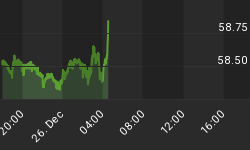Yes, You Heard Us Right
Everywhere you look, the mainstream financial experts are pinning on their "WIN 2" buttons in a show of solidarity against what they see as the number one threat to the U.S. economy: Whip Inflation Now.
There's just one problem: They're primed to fight the wrong enemy. Fact is, despite ten rate cuts by the Federal Reserve Board to record low levels plus $13 trillion (and counting) in government bailout money over the past three years -- the Demand For and Availability Of credit is plunging. Without a borrower or lender, the massive supply of debt LOSES value, bringing down every exposed investment like one long, toppling row of dominoes.
This is the condition known as Deflation.
And, in a special, expanded November 19, 2009 Elliott Wave Theorist, Bob Prechter uncovered more than a dozen "value depreciating" developments underway in the U.S. economy as the two main engines of credit expansion sputter: Banks and Consumers. Off the top of the Theorist's watch list are these "Continuing and Looming Deflationary Forces":
-
A riveting chart of Treasury Holdings as a Percentage of US Chartered Bank Assets since 1952 shows how "safe" bank deposits really are. In short: today's banks are about 95% invested in mortgages via the purchase of federal agency securities. Unlike Treasuries, IOU's with homes as collateral have "tremendous potential" to fall in dollar value.
-
Loan Availability to Small Businesses has fallen to the lowest level since the interest rate crises of 1980. In Bob Prechter's own words: "The means of debt repayment [via business growth] are evaporating, which implies further deflationary pressure within the banking system."
-
An all-inclusive close-up of the Number Of Banks Tightening Their Lending Standards since 1997 has this message to impart: Since peaking in October 2008, lending restrictions have soared, thereby significantly reducing the overall credit supply.
-
Both residential and commercial mortgages are plummeting as home/business owners walk away from their leases at an increasing rate.
-
The major sources of bank revenue -- consumer credit and state taxes -- are plunging as more people opt to pay DOWN their debt. Also, a compelling chart of leveraged buyouts since 1995 shows a third catalyst for the credit binge -- private equity -- on the decline.
All that is just the beginning. The November 2009 Elliott Wave Theorist includes 13 pages of commentary, riveting charts, and unparalleled insight that make it impossible to ignore the deflationary shift underway in the financial landscape. For that reason, we have compiled the most timely insights from the entire, two-part Theorist in a special article for Club EWI members. In our opinion, this bundle of exlusive Theorist excerpts are "the most important investment report you'll read in 2010."
Elliott Wave International's latest free report puts 2010 into perspective like no other. The Most Important Investment Report You'll Read in 2010 is a must-read for all independent-minded investors. The 13-page report is available for free download now. Learn more here.















